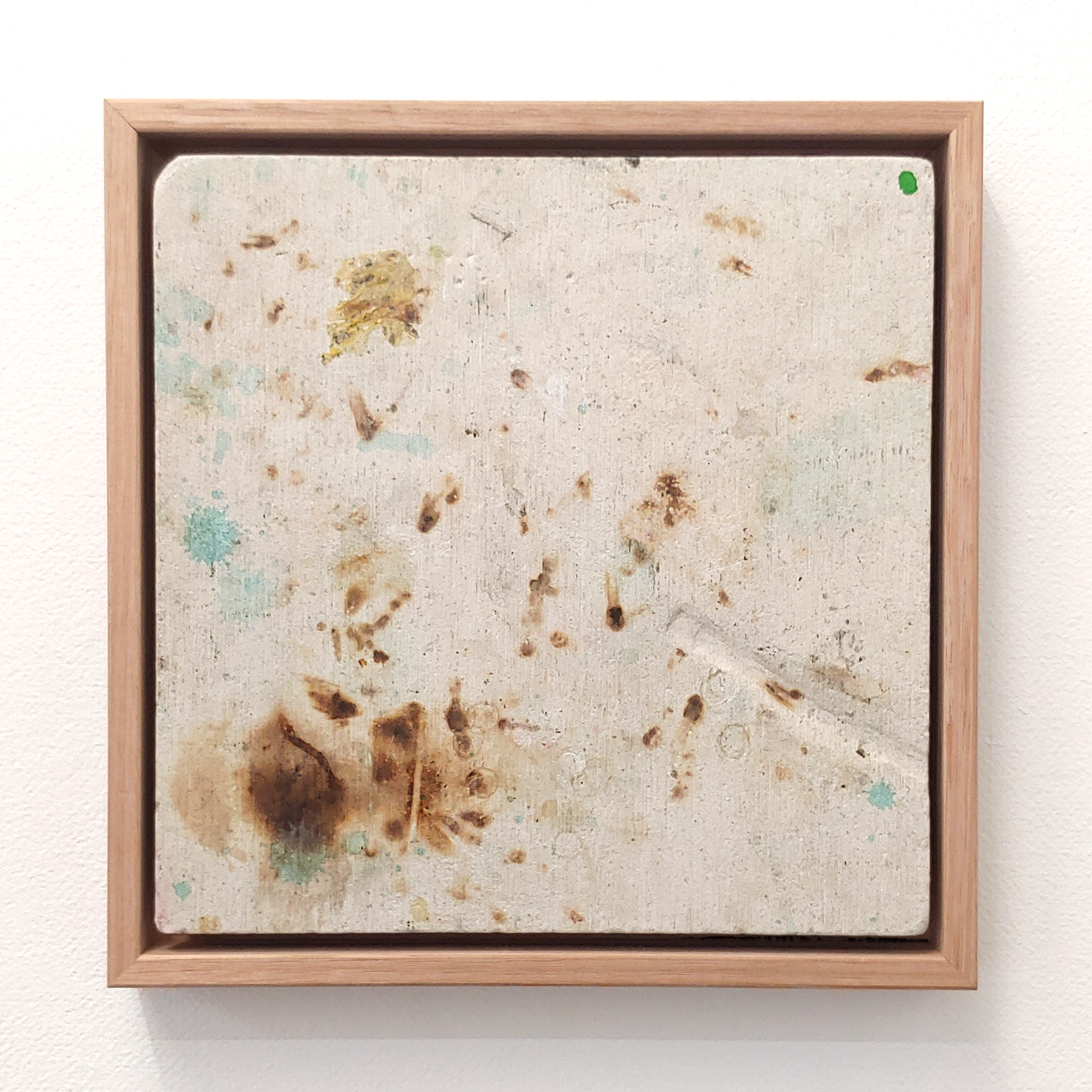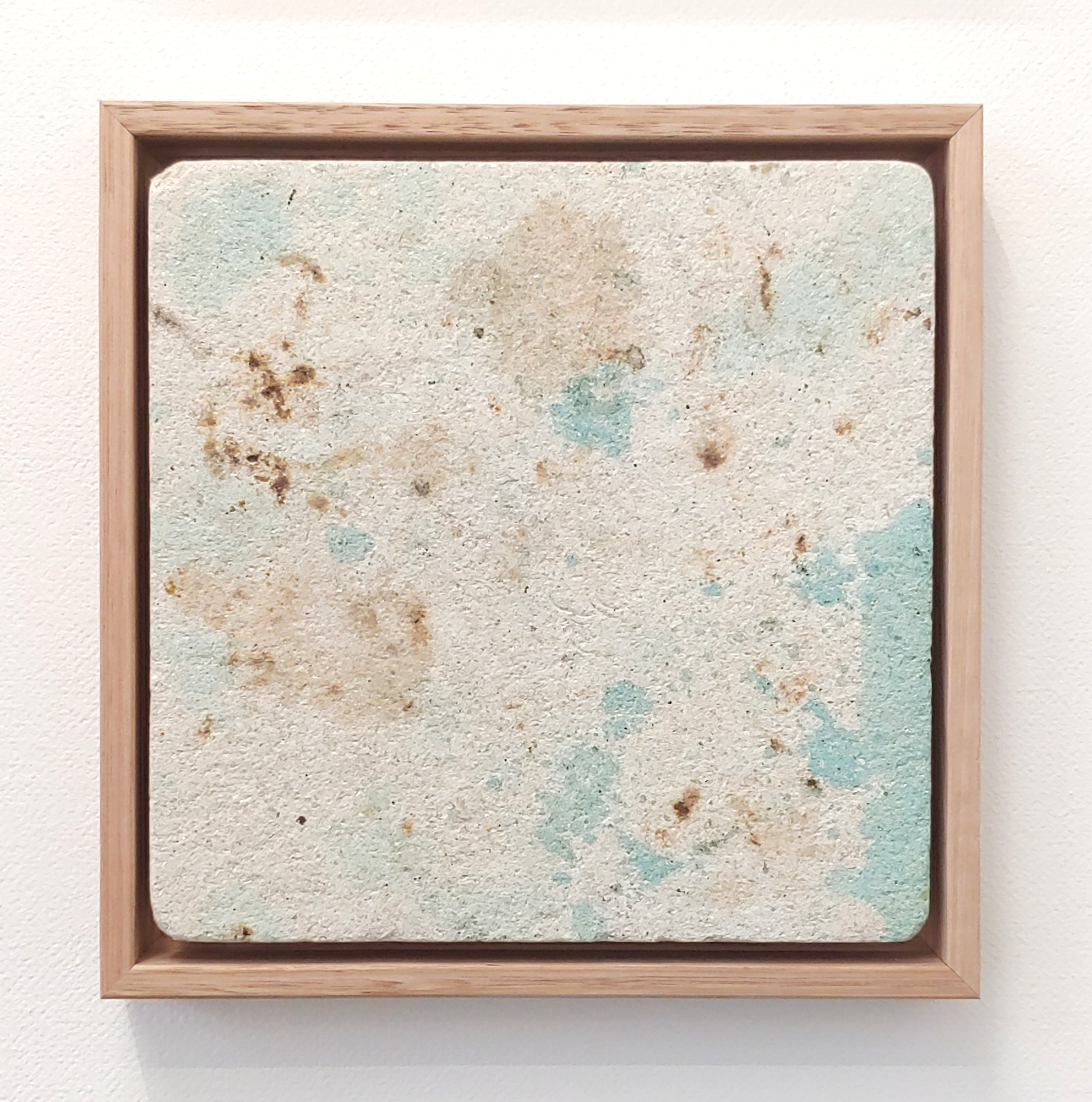(left to right) Lab Hands #4, Lab Hands #5, Lab Hands #8, 2018, calcium silicate lab mats. 25 x 25 cm each.
[Interview excerpt from Cool Change Contemporary Exhibition Catalogue 28th September - 21st October, 2018]
Lab Hands can be interpreted as a documentation of memory. What do you find valuable about commemorating mistakes, and through this, how does the idea of failure play an important part in your practice?
Failure is a fascinating idea because it describes agency or intent in the negative (you have to have a goal in mind in order to fail). Failure describes a situation where events deviate from what is ‘expected’. Lab Hands interested me because they’re just slips or miniature versions of this. They are moments in which the hand fails to execute the action that the mind conceives. This, in itself, is made even more interesting in the accumulation of these slips onto the same documents; year after year, experiment after experiment. Failure in an arts practice is important because it’s this moment where the artist doesn’t get their way; something has interceded or invaded. The invasions into practice are the most interesting


